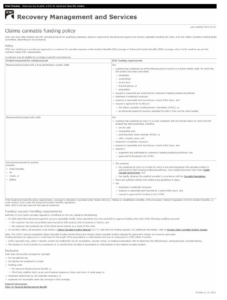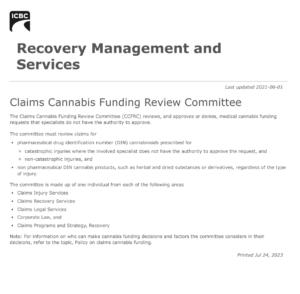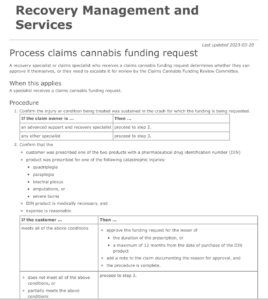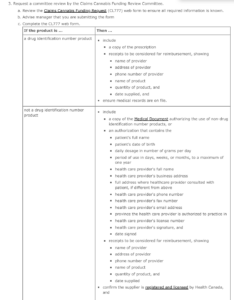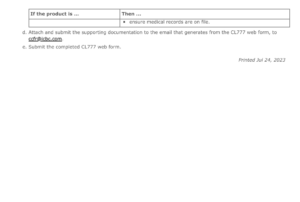BC Court of Appeal Lays Down The Law of Sports Negligence Claims in BC
Today the BC Court of Appeal published reasons for judgement clarifying the law in sports negligence lawsuits in BC. In short liability can flow if a player is dangerous or reckless in their actions, even if executing an otherwise permitted technique.
In the recent case (Cox v. Miller) the Plaintiff suffered a grade 3 dislocation of the right acromioclavicular joint as a result of a slide tackle in a recreational soccer game. The game was under FIFA rules in which slide tackles were allowed. At trial the Defendant was found liable with the court finding he approached the Plaintiff from a blind spot, had both his feet leave the ground and violently slide tackled the Plaintiff while having no chance of actually contacting the ball. The court found doing so was negligent. Noting that while slide tackles were legal this particular slide tackle was dangerous, reckless and beyond what players consented to at this recreational level of play.
The Defendant appealed arguing the court imposed too tough of a standard of care. The BC Court of Appeal disagreed and dismissed the appeal. In doing so the Court provided the following summary of negligence principles applied in the sports law setting in British Columbia:
[40] While the referee was in charge of the match, the judge was in charge of the litigation. She was, in effect, the final referee. On her factual findings, the appellant’s conduct amounted to serious foul play that would have justified the issuance of a red card disqualifying the appellant from further participation in the game. In short, the tackle was not, as the appellant suggests, permitted by the rules of the game, nor was it found by the judge merely to be careless. It was found to be dangerous.
[41] Respectfully, it appears to me that the appellant has advanced a straw-man argument, divorced from the judge’s factual findings. Put bluntly, the issue he seeks to have resolved in this case—whether mere carelessness in the execution of a permissible defensive play made attracts liability in negligence—does not arise on the factual findings made by the judge.
[42] Second, I know of no authority for the broad proposition the appellant would have us endorse—that a play permitted by the rules of the game, no matter how dangerously executed and regardless of the context in which the game is being played (here, a game played in a recreational league involving participants with a wide range of skill and experience), can never give rise to liability in negligence.
[43] The appellant cites no direct authority for the proposition that a permissible play, executed dangerously, can never amount to negligence.
[44] In my view, the appellant can derive no comfort on this point from the remarks of Lambert J.A. in Herok, which merely affirm the proposition that careless acts falling outside the risks assumed by players by participating in the game are capable of grounding liability in negligence. The case certainly does not support the broad proposition advanced by the appellant. Further, I am unpersuaded by the appellant’s attempt to read into the governing authorities of this Court, including Herok, Unruh and Zapf, in support for his position.
[45] By analogy, open ice body checking is permitted in hockey. However, liability in negligence may flow if the body check is executed in a manner that exposes an opponent to an unreasonable risk of harm—a risk the opponent could not reasonably be expected to assume by participating in the game, having regard to contextual factors including the speed and level at which the game is played. A hockey player is no more immune from liability because body checking is permitted than is a driver who executes a lawful left turn in a manner heedless of the safety of others.
[46] Third, acceptance of the appellant’s proposition would give the rules of play a near determinative role in the analysis. Again, I know of no authority that would elevate whether the play in issue was permitted by the rules of the game to such a lofty status. While the rules of the game are a factor to be considered along with other circumstances, the rules are by no means conclusive: Unruh at paras. 23–25, 29, 32–33; Finnie v. Ropponen, 1987 Carswell 659, [1987] B.C.J. No. 448 (S.C.) at paras. 12, 14; Condon v. Basi, [1985] 2 All E.R. 453 (C.A.), 1 W.L.R. 866—where, as here, a dangerously executed slide tackle grounded a negligence finding.
[47] The appellant also argues that the judge erred in law by conflating the meaning of “recklessness” as used in the FIFA rules of play with recklessness in law. I see no merit in this position. Nothing in the judge’s reasons supports the appellant’s position on this point. Further, as I will explain below, the judge found the appellant to have deliberately attempted a slide tackle that he knew, or ought to have known, created an unjustified risk of harm. Against these findings, she made no error in characterizing the appellant’s conduct as reckless.
[48] Finally, the appellant submits that the factual findings of the judge support only a finding of carelessness. Again, I do not agree. The tackle came from behind the respondent, who did not see the challenge coming and had no opportunity to brace himself for impact. The appellant slid into the respondent with both of his legs off the ground, striking the respondent slightly below his knees. The trial judge found there was no possibility that the appellant would reach the ball in executing the tackle. In these circumstances, the judge’s factual findings, when viewed in the context of the evidence as a whole, support her ultimate conclusion that the appellant’s actions were reckless and dangerous.
…
[53] To summarize, I would reject the appellant’s proposition that a defending player in a soccer game is immune from liability for negligence if there is a possibility they will contact the ball in executing a slide tackle, no matter how remote that possibility is, or how dangerous execution of the tackle will be to an opposing player. That is not and could not be the law.
[54] Whether this ground of appeal is properly characterized as an extricable error in law or a question of mixed fact and law—the appellant was not clear on this point—makes no difference to the end result. I see no extricable error in law, nor have I been persuaded that the judge’s analysis reflects palpable and overriding error.
